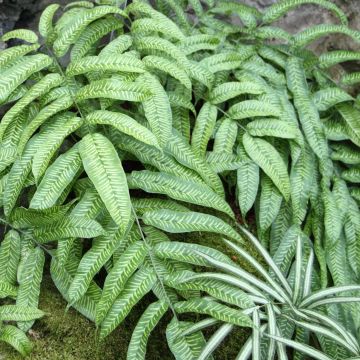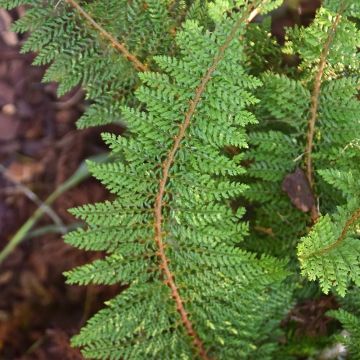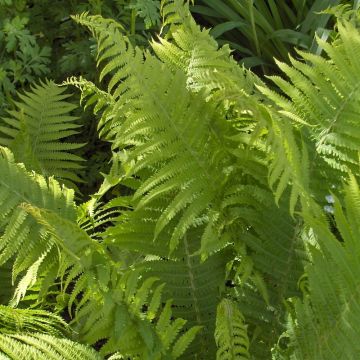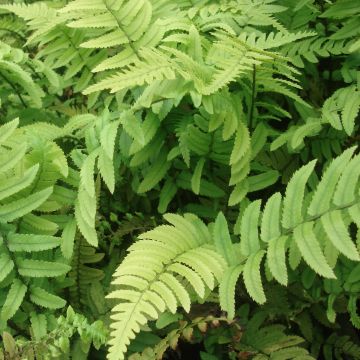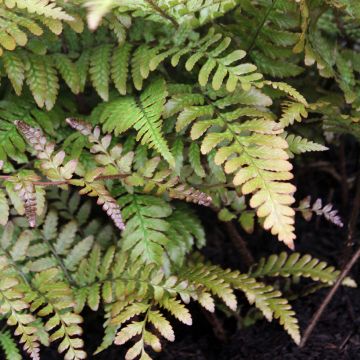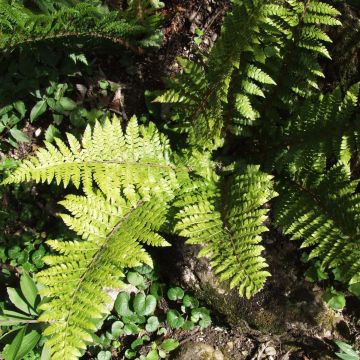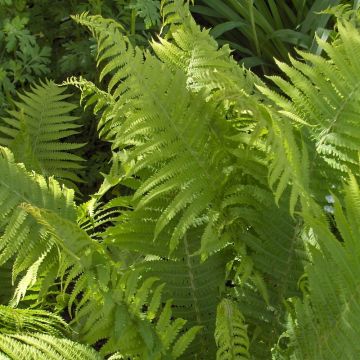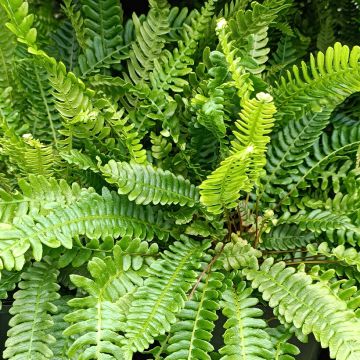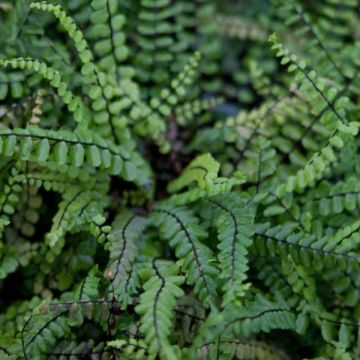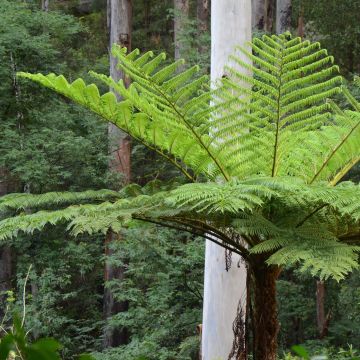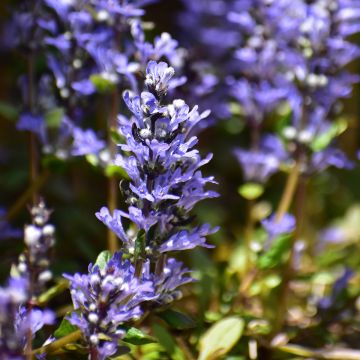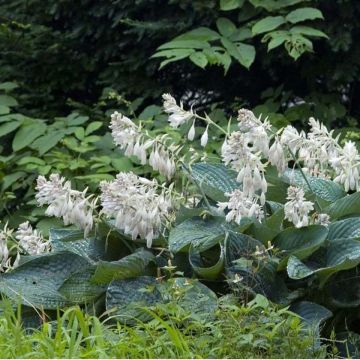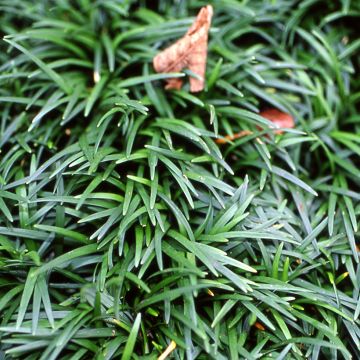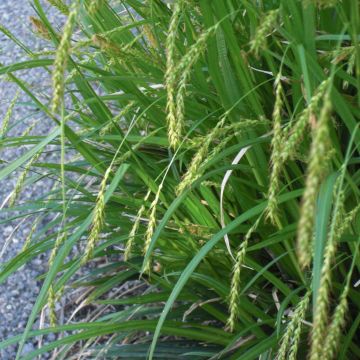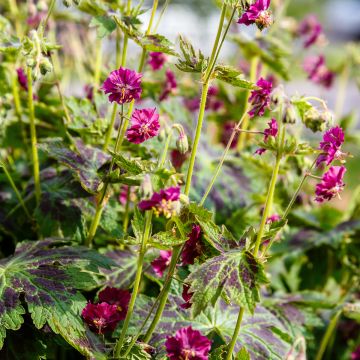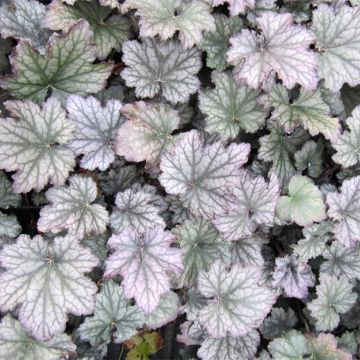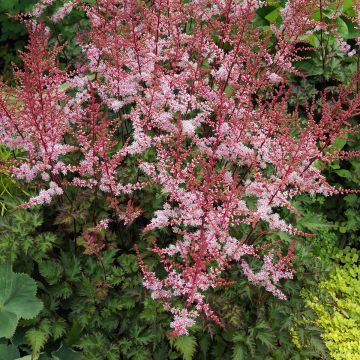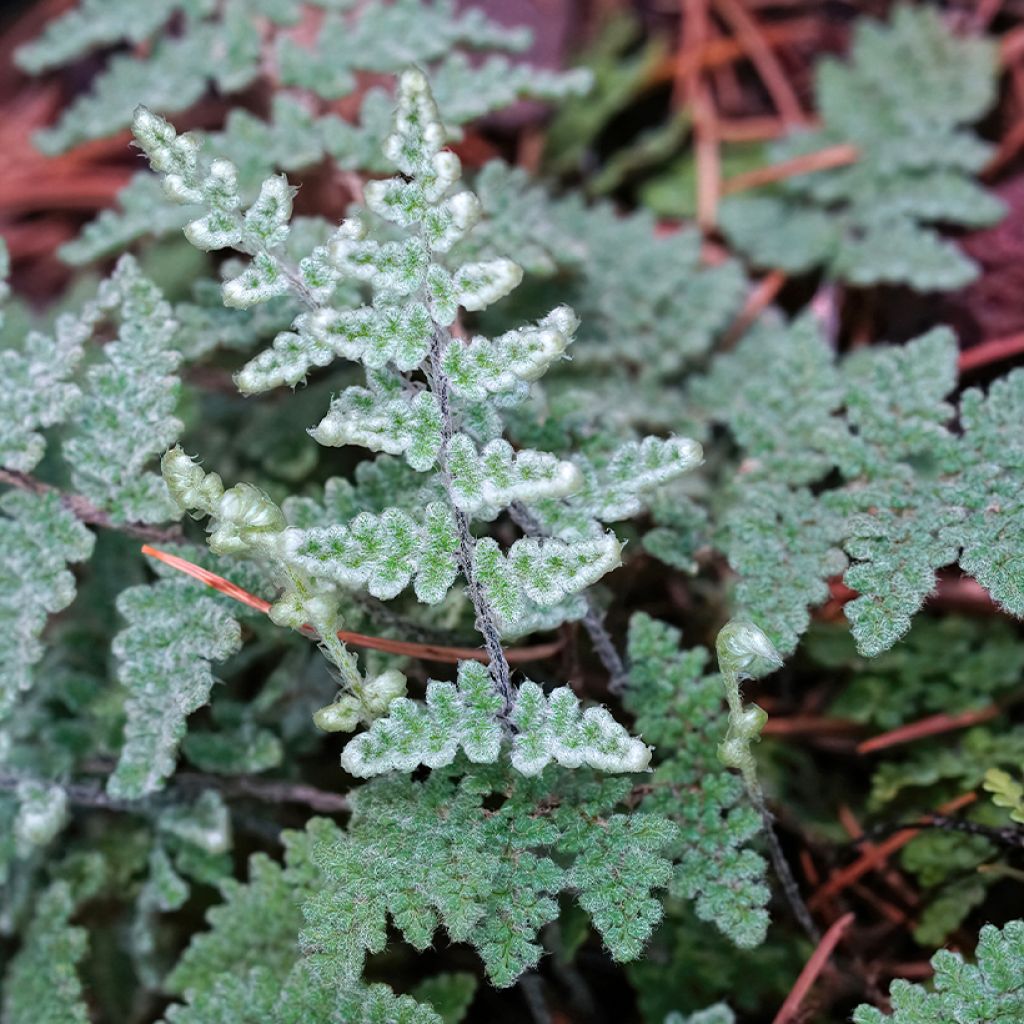

Cheilanthes lanosa Cimbra - Hairy Lip Fern
Cheilanthes lanosa Cimbra - Hairy Lip Fern
Cheilanthes lanosa Cimbra
Hairy Lip Fern, Woolly Lip Fern
How can a dead plant be delivered?
Partagas, 23/05/2024
Special offer!
Receive a €20 voucher for any order over €90 (excluding delivery costs, credit notes, and plastic-free options)!
1- Add your favorite plants to your cart.
2- Once you have reached €90, confirm your order (you can even choose the delivery date!).
3- As soon as your order is shipped, you will receive an email containing your voucher code, valid for 3 months (90 days).
Your voucher is unique and can only be used once, for any order with a minimum value of €20, excluding delivery costs.
Can be combined with other current offers, non-divisible and non-refundable.
Home or relay delivery (depending on size and destination)
Schedule delivery date,
and select date in basket
This plant carries a 12 months recovery warranty
More information
We guarantee the quality of our plants for a full growing cycle, and will replace at our expense any plant that fails to recover under normal climatic and planting conditions.
Would this plant suit my garden?
Set up your Plantfit profile →
Description
Cheilanthes lanosa 'Cimbra' is a variety of this small evergreen fern that will grow in difficult conditions of heat and drought. It is very resistant to cold, but less so to humidity. Its 20 to 30 cm (8 to 12in) long fronds, are very hairy and have a fresh green colour with silver highlights. The pinnae are loose. The species is native to arid regions of the United States and Mexico. It can be grown in borders or rock gardens exposed to the sun, in well-drained soil.
Cheilanthes lanosa is a perennial fern belonging to the Pteridaceae family, native to the Southwest of the United States and Mexico. It grows on cliffs and rocky hillsides where it has adapted to extreme heat and aridity. This drought resistance is characterised by the silver hairs that cover the fronds, which capture morning dew and limit evapotranspiration during the day. Its species name, lanosa, means woolly in Latin and highlights the hairiness of the fronds. Cheilanthes lanosa 'Cimbra' forms a tuft that reaches a height and width of about 30 cm (12in) and persists throughout winter. The brown petioles carry fresh green fronds with silver highlights on the upper surface, while the reproductive cells (sori), arranged on the lower surface, are rust-coloured. Hardy down to -15°C (5°F).
Cheilanthes lanosa 'Cimbra' is best planted in spring, in well-drained and fertile, rocky, slightly acidic or neutral soil, in full sun or light shade. This plant does not tolerate excessive moisture during winter. It may be wise to grow it in a pot with well-draining substrate to protect it from intense winter rains. The dried fronds can be pruned in early spring. It thrives in a rock garden or on a wall and it pairs well with blue fescue grass, in terms of requirements and colour.
Although these ferns belong to a genus that is widespread worldwide, almost all of them are of tropical origin.
Report an error about the product description
Cheilanthes lanosa Cimbra - Hairy Lip Fern in pictures
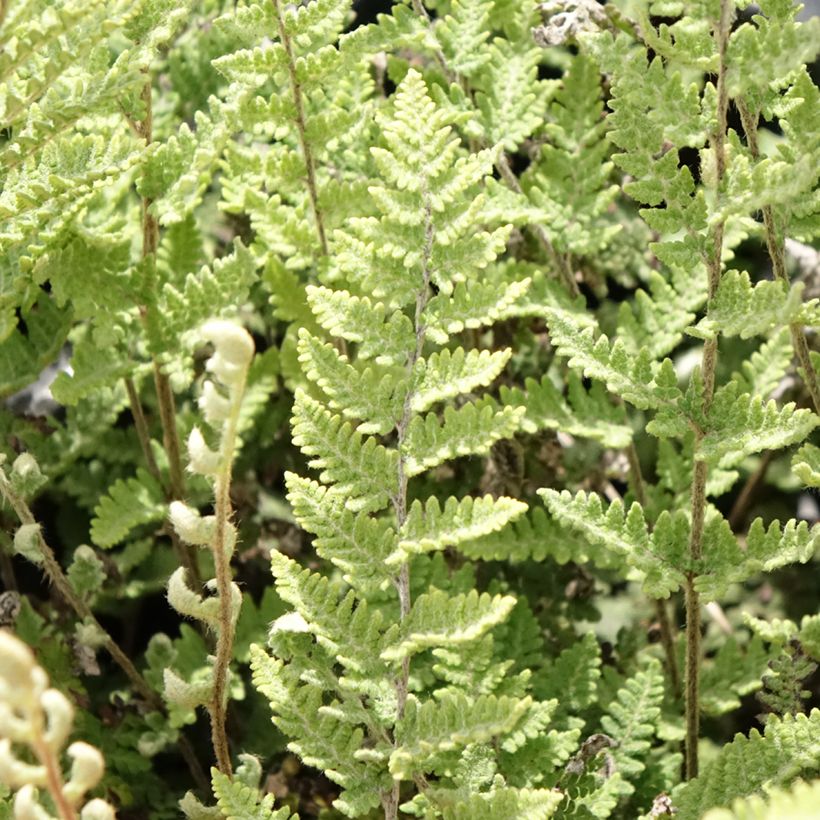

Foliage
Plant habit
Botanical data
Cheilanthes
lanosa
Cimbra
Pteridaceae
Hairy Lip Fern, Woolly Lip Fern
Central America
Other Ferns
View all →Planting and care
Cheilanthes lanosa 'Cimbra' should be planted in spring, exposed to the sun or with a slight shade, in a well-drained and fertile, rocky, slightly acidic or neutral soil. This plant does not tolerate excessive moisture during winter, so it may be a good idea to grow it in a pot (with well-draining substrate) to protect it from unfavourable winter conditions.
Planting period
Intended location
Care
-
, onOrder confirmed
Reply from on Promesse de fleurs
Similar products
Haven't found what you were looking for?
Hardiness is the lowest winter temperature a plant can endure without suffering serious damage or even dying. However, hardiness is affected by location (a sheltered area, such as a patio), protection (winter cover) and soil type (hardiness is improved by well-drained soil).

Photo Sharing Terms & Conditions
In order to encourage gardeners to interact and share their experiences, Promesse de fleurs offers various media enabling content to be uploaded onto its Site - in particular via the ‘Photo sharing’ module.
The User agrees to refrain from:
- Posting any content that is illegal, prejudicial, insulting, racist, inciteful to hatred, revisionist, contrary to public decency, that infringes on privacy or on the privacy rights of third parties, in particular the publicity rights of persons and goods, intellectual property rights, or the right to privacy.
- Submitting content on behalf of a third party;
- Impersonate the identity of a third party and/or publish any personal information about a third party;
In general, the User undertakes to refrain from any unethical behaviour.
All Content (in particular text, comments, files, images, photos, videos, creative works, etc.), which may be subject to property or intellectual property rights, image or other private rights, shall remain the property of the User, subject to the limited rights granted by the terms of the licence granted by Promesse de fleurs as stated below. Users are at liberty to publish or not to publish such Content on the Site, notably via the ‘Photo Sharing’ facility, and accept that this Content shall be made public and freely accessible, notably on the Internet.
Users further acknowledge, undertake to have ,and guarantee that they hold all necessary rights and permissions to publish such material on the Site, in particular with regard to the legislation in force pertaining to any privacy, property, intellectual property, image, or contractual rights, or rights of any other nature. By publishing such Content on the Site, Users acknowledge accepting full liability as publishers of the Content within the meaning of the law, and grant Promesse de fleurs, free of charge, an inclusive, worldwide licence for the said Content for the entire duration of its publication, including all reproduction, representation, up/downloading, displaying, performing, transmission, and storage rights.
Users also grant permission for their name to be linked to the Content and accept that this link may not always be made available.
By engaging in posting material, Users consent to their Content becoming automatically accessible on the Internet, in particular on other sites and/or blogs and/or web pages of the Promesse de fleurs site, including in particular social pages and the Promesse de fleurs catalogue.
Users may secure the removal of entrusted content free of charge by issuing a simple request via our contact form.
The flowering period indicated on our website applies to countries and regions located in USDA zone 8 (France, the United Kingdom, Ireland, the Netherlands, etc.)
It will vary according to where you live:
- In zones 9 to 10 (Italy, Spain, Greece, etc.), flowering will occur about 2 to 4 weeks earlier.
- In zones 6 to 7 (Germany, Poland, Slovenia, and lower mountainous regions), flowering will be delayed by 2 to 3 weeks.
- In zone 5 (Central Europe, Scandinavia), blooming will be delayed by 3 to 5 weeks.
In temperate climates, pruning of spring-flowering shrubs (forsythia, spireas, etc.) should be done just after flowering.
Pruning of summer-flowering shrubs (Indian Lilac, Perovskia, etc.) can be done in winter or spring.
In cold regions as well as with frost-sensitive plants, avoid pruning too early when severe frosts may still occur.
The planting period indicated on our website applies to countries and regions located in USDA zone 8 (France, United Kingdom, Ireland, Netherlands).
It will vary according to where you live:
- In Mediterranean zones (Marseille, Madrid, Milan, etc.), autumn and winter are the best planting periods.
- In continental zones (Strasbourg, Munich, Vienna, etc.), delay planting by 2 to 3 weeks in spring and bring it forward by 2 to 4 weeks in autumn.
- In mountainous regions (the Alps, Pyrenees, Carpathians, etc.), it is best to plant in late spring (May-June) or late summer (August-September).
The harvesting period indicated on our website applies to countries and regions in USDA zone 8 (France, England, Ireland, the Netherlands).
In colder areas (Scandinavia, Poland, Austria...) fruit and vegetable harvests are likely to be delayed by 3-4 weeks.
In warmer areas (Italy, Spain, Greece, etc.), harvesting will probably take place earlier, depending on weather conditions.
The sowing periods indicated on our website apply to countries and regions within USDA Zone 8 (France, UK, Ireland, Netherlands).
In colder areas (Scandinavia, Poland, Austria...), delay any outdoor sowing by 3-4 weeks, or sow under glass.
In warmer climes (Italy, Spain, Greece, etc.), bring outdoor sowing forward by a few weeks.






























